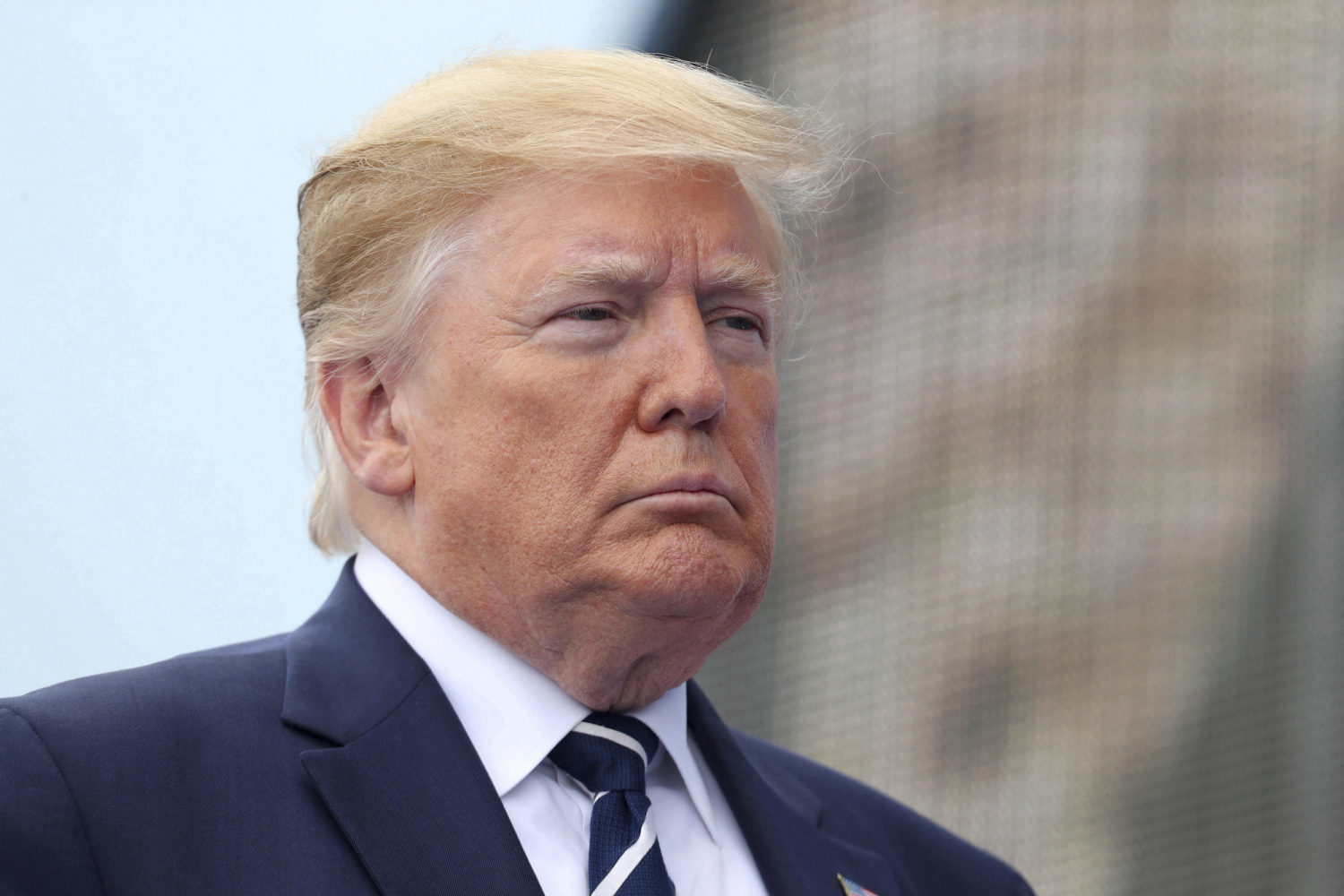Former President Donald Trump recently released a statement claiming he was “right about everything” that critics said he was wrong on. Is he right about being right? We looked through the 10 points in Trump’s June 12 statement and found that in some cases what he claims is unproven or in dispute, in a few cases he was accurate, and in other cases he was expressing an opinion that is subjective.
“Have you noticed that they are now admitting I was right about everything they lied about before the election?” Trump asked.
Here’s the list of things Trump said he was right about, fact-checked.
‘Hydroxychloroquine works’
This remains a questionable claim.
In March 2020, as Trump touted hydroxychloroquine, the U.S. Food and Drug Administration authorized emergency use of hydroxychloroquine for hospitalized COVID-19 patients who met specific criteria. But the FDA revoked its authorization less than three months later, after determining “it is no longer reasonable” to believe that it was effective in treating COVID-19, “nor is it reasonable to believe that the known and potential benefits of these products outweigh their known and potential risks.”
A study published May 31, 2021, reviewed medical records of COVID-19 hospitalized patients who required invasive mechanical ventilation during the first two months of the U.S. pandemic. The study concluded that dosing of hydroxychloroquine and azithromycin above a certain level “improves survival by nearly 200%.”
But the study was posted on a website that publishes “preprints” — studies that the website says “have not been finalized by authors, might contain errors and report information that has not yet been accepted or endorsed in any way by the scientific or medical community.” Experts told PolitiFact the study was poorly designed and cautioned against using it to draw conclusions about cause and effect.
‘The Virus came from a Chinese lab’
This is unproven and widely debated.
Scientists, public health officials and others have become more open to the idea that the virus that causes COVID-19 could have been accidentally released from a lab. SARS-CoV-2 was first noticed in Wuhan, China, close to a lab where bat coronaviruses were being studied and far from the location where naturally occurring relatives of the virus were found. However, there are other plausible explanations of how the virus could have made its way to Wuhan besides a lab leak.
The early outbreak of the coronavirus was linked to various wildlife markets, which lends support to the claim that the virus jumped from animals to humans. However, scientists haven’t yet identified an intermediate host animal that could have incubated the virus before it jumped to humans.
None of this amounts to hard proof of either theory. Even the lab leak theory’s adherents say more research is needed. The virus’s origins currently remain unknown.
‘Hunter Biden’s laptop was real’
It was real in the sense that it exists, but it didn’t prove much.
Trump allies obtained a laptop or copies of a laptop during the 2020 campaign that allegedly belonged to Hunter Biden, President Joe Biden’s son. Over time, there has been less doubt that the laptop did in fact belong to Hunter Biden, though how the laptop came to be obtained by Trump allies and Trump-friendly media outlets is unclear.
The London-based Daily Mail has published a series of salacious findings from the laptop, including nude photos of Hunter Biden, that have focused on his drug use and legal problems. Hunter Biden has been open about his history as a recovering drug addict; he’s said it’s possible the laptop was stolen from him.
Nothing from the laptop has revealed illegal or unethical behavior by Joe Biden as vice president with regard to his son’s tenure as a director for Burisma, a Ukraine-based natural gas company.
[the_ad id=”667826″]
‘Lafayette Square was not cleared for a photo op’
A recently released U.S. Interior Department inspector general report concluded that the U.S. Park Police cleared Lafayette Square amid June 2020 protests not specifically for Trump but rather so more secure fencing could be installed.
The report isn’t a full vetting of all federal officials’ actions that day.
On June 1, 2020, Trump walked from the White House to the historic St. John’s Church on Lafayette Square for a photo op. At the time, downtown Washington, D.C., was full of protesters following the death of George Floyd at the hands of Minneapolis police days earlier.
“The evidence showed that the USPP (U.S. Park Police) did not know about the president’s potential movement until mid to late afternoon on June 1 — hours after it had begun developing its operational plan and the fencing contractor had arrived in the park,” the IG report said.
The report focused on Park Police, however, and it didn’t include interviews with Attorney General William Barr or White House personnel.
Barr indicated to Park Police that Trump would be arriving that evening. At approximately 6:10 p.m., news video showed Barr entering Lafayette Park.
The Park Police operations commander said Barr asked him, “Are these people still going to be here when POTUS (President of the United States) comes out?” The commander told the inspector general he had not known that Trump would be coming to Lafayette Park.
“He said he replied to the Attorney General, ‘Are you freaking kidding me?’ and then hung his head and walked away. The Attorney General then left Lafayette Park. The USPP operations commander denied that the Attorney General ordered him to clear Lafayette Park and H Street,” the report stated.
‘The ‘Russian Bounties’ story was fake’
The story on Russian bounties wasn’t “fake,” but it also isn’t as certain as it seemed in the summer of 2020.
The New York Times reported June 26, 2020, that American intelligence officials concluded that a Russian military intelligence unit secretly offered bounties to Taliban-linked militants for the killing of coalition forces in Afghanistan, including U.S. troops. Other news outlets — The Associated Press, The Washington Post, CNN and Fox News — also reported on the information, citing officials familiar with the issue. Trump at the time criticized the reports as “fake news” and said the story was not credible.
After Biden took office in 2021, the administration downplayed the reports, noting that the intelligence was deemed to be of “low to moderate confidence,” but it didn’t dismiss the story entirely, either.
“This information really puts the burden on Russia and the Russian government to explain their engagement here,” said White House press secretary Jen Psaki on April 15, 2021.
‘We did produce vaccines before the end of 2020, in record time’
Trump is correct that vaccines were produced before the end of 2020, a fact that hasn’t been questioned. In the spring of 2020, the Trump administration organized Operation Warp Speed, which aimed to have substantial quantities of a vaccine by January 2021.
In December, the Food and Drug Administration granted emergency use authorization for the Pfizer vaccine for people age 16 and up and the Moderna vaccine for adults. While the vaccines were produced by the end of 2020, they were initially available only to health care workers. By the end of Trump’s tenure in January, about 14 million Americans had received a shot.
‘Blue state lockdowns didn’t work’
This is an oversimplification and has too many exceptions to be accurate.
States that implemented strict lockdowns had both success and setbacks in keeping cases low. Other factors seemed to determine how high COVID-19 rates reached.
One blue-state success, for example, is Vermont. Vermont currently has the lowest number of COVID-19 deaths and is a very close second to Hawaii for the lowest number of deaths per 100,000 residents. Vermont has been credited with a thorough lockdown that eased slowly.
Experts and several studies show government-imposed shutdowns do work to slow COVID-19 when combined with mask mandates and social distancing, but they depend on the public’s willingness to comply with the orders. In other cases, experts credited mild weather in some states with keeping cases low.
[the_ad id=”667872″]
‘Schools should be opened’
This is an opinion. But public health experts did increasingly support school reopenings as the school year progressed in 2020.
The Biden administration took steps to encourage school reopenings, including prioritizing vaccination of educators and pressing for the passage of the American Rescue Plan, which included funding to help schools prepare buildings for reopening. Other factors were also at play: COVID-19 cases were declining in areas. Vaccinations were increasing. Parents were pressuring schools to open. Pediatricians and health experts were urging a return to school. And some governors were advocating for more in-person instruction.
The CDC issued recommendations on Feb. 12 that called for reopened schools to employ universal masking, keep everyone 6 feet apart, clean regularly, and require quarantining and contract tracing for new cases. Some public health experts criticized the guidelines as too strict. In March, the CDC generally shrank the 6-foot rule to 3 feet, except in some middle and high schools where transmission was high.
Throughout the school year, the percentage of students attending schools in person continued to rise, according to Burbio, a firm that tracks data on school reopenings. As of mid-June, Burbio found that only about 2% of K-12 students were attending virtual-only schools.
‘Critical Race Theory is a disaster for our schools and our Country’
This is an opinion.
Critical race theory — a broad set of ideas about systemic bias and privilege — might have its roots in legal academia, but it is becoming one of the more potent controversies in America’s state legislatures.
Conservative lawmakers in over a dozen states, including Missouri, Idaho, Tennessee, have introduced bills aimed at barring critical race theory in the classroom. The bills generally forbid teachers from offering instruction that suggests that the United States is fundamentally racist, or that leads students to feel guilty for past actions by white people. Some of the bills expressly use the term “critical race theory,” while others ban certain practices.
Educators have warned that the bans will prompt teachers to confine their lessons to a limited view of American history and current events. Others say that critical race theory isn’t even taught in K-12 schools but is generally taught in law schools or graduate schools.
‘Our Southern Border security program was unprecedentedly successful’
This is an opinion, and it depends upon how you define success.
Working alone through executive actions, Trump advanced several of his immigration promises, but his attempts to fulfill others were rejected by courts or Congress. He limited legal immigration, restricted asylum and refugee programs but did not complete the border wall, triple ICE deportation officers or cut funding to sanctuary cities. Trump also faced a backlash over his family separation policies.
A Biden-appointed task force is now working to reunite families who were separated under Trump’s “zero-tolerance” policy, and dealing with the challenge of poor record-keeping by officials at the border.
[the_ad id=”667878″]
This article was originally published by PolitiFact, which is part of the Poynter Institute. It is republished here with permission. See the sources for these fact checks here and more of their fact checks here.









